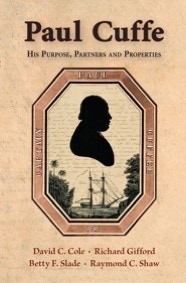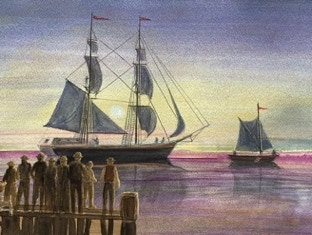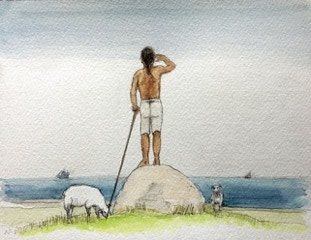
$15.00
Trade Paperback
106 pages • 6” x 9”
30+ maps & illustrations
Also available as an eBook!
$9.99

Paul Cuffe in the brig Traveller sailing past Westport Point en route to Sierra Leone. – Watercolor by Raymond C. Shaw
by David C. Cole
Richard Gifford • Betty F. Slade • Raymond C. Shaw
Paul Cuffe (1759-1817), was born on Cuttyhunk Island in Massachusetts to African and Native American parents. Largely self-educated, he rose to become a widely-known paragon of virtue and commitment to improving the well-being of his fellow man, especially the people of Africa and the African diaspora.
This book focuses on clarifying or resolving uncertainties about three aspects of his remarkable life: the purpose of his travels to Africa; the nature of his relationships with several important persons who contributed significantly to his success; and the various properties that he owned in and around the town of Westport—including their locations, how and why they were acquired, and the purposes for which he used them
Paul Cuffe may well have been the best-known African American in the Early Republic. He enjoyed private audiences with statesmen in Washington, bankers in London, and headmen in Sierra Leone. David Cole, Betty F. Slade and Richard Gifford’s meticulous research and insightful analysis show that we can only understand Cuffe’s exalted standing in the Atlantic World if we recognize that he was a product of the New England Coast. We can only understand his rise to international renown if we remember his roots in the farms, shipyards and Quaker Meeting House of Westport, Massachusetts.
–James Sidbury, author of Becoming African in America:
Race and Nation in the Early Black Atlantic. Oxford University Press, 2007


Paul Cuffe as a boy living and tending sheep on Cuttyhunk Island.
– Watercolor by Raymond C. Shaw